The Lamplighter
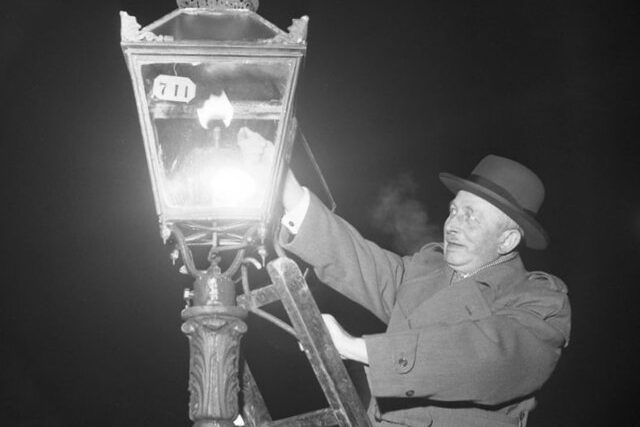
Imagine a figure, silhouetted against the twilight, moving through the streets with a long pole, igniting the gas lamps that illuminated the night. The lamplighter was once a vital part of urban life, ensuring the safety and visibility of city dwellers. Experts note that this job was not just about lighting lamps; it was about maintaining a sense of community and security in the darkness. The daily routine of the lamplighter, moving from lamp to lamp, created a rhythm to the city’s evenings, a reassuring presence in the night. This wasn’t merely a job; it was a ritual, a daily dance with the fading light.
The transition to electric streetlights gradually phased out the need for lamplighters. Historians reflect on the loss of this profession as a marker of technological advancement, a shift from manual labor to automated systems. The lamplighter’s role was deeply connected to the rhythm of the city, and their disappearance signaled a change in the urban landscape. This wasn’t just about losing a job; it was about losing a piece of the city’s soul, a connection to a simpler time.
The Switchboard Operator
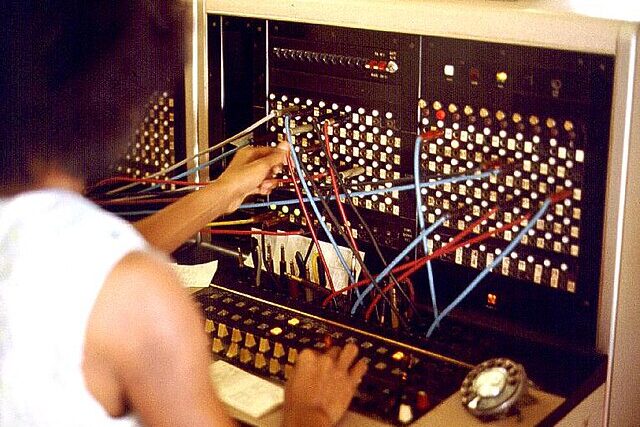
Picture a bustling room filled with switchboards, a web of wires, and the constant buzz of human voices. The switchboard operator was the human connection between telephone callers, manually routing calls and connecting people. Experts highlight the crucial role these operators played in facilitating communication, acting as the nerve center of early telephone networks. The skill and patience required to manage the complex switchboards were immense, a testament to human ingenuity. This wasn’t just about connecting calls; it was about connecting people, a vital link in the chain of communication.
The advent of automated telephone exchanges gradually replaced the need for switchboard operators. Historians note that this transition marked a significant shift in communication technology, moving from human-mediated connections to automated systems. The switchboard operator’s role was deeply intertwined with the social fabric of the community, and their disappearance signaled a change in how we connect. This wasn’t just about losing a job; it was about losing a human touch, a personal connection in a rapidly changing world.
The Bowling Pinsetter

Imagine the rhythmic clatter of bowling pins being reset after each throw, a task performed manually by young pinsetters. The bowling pinsetter was once a common sight in bowling alleys, responsible for clearing and resetting pins for each frame. Experts reflect on the physical demands of this job, requiring agility and speed to keep up with the pace of the game. The pinsetter’s role was essential to the smooth operation of the bowling alley, ensuring a continuous flow of gameplay. This wasn’t just about setting pins; it was about keeping the game alive, a vital part of the bowling experience.
The introduction of automated pinsetting machines gradually phased out the need for human pinsetters. Historians note that this technological advancement significantly altered the bowling industry, making the game more efficient and accessible. The pinsetter’s role was deeply connected to the social atmosphere of the bowling alley, and their disappearance signaled a change in the game’s dynamic. This wasn’t just about losing a job; it was about losing a piece of the bowling culture, a human element in a mechanized world.
The Ice Cutter
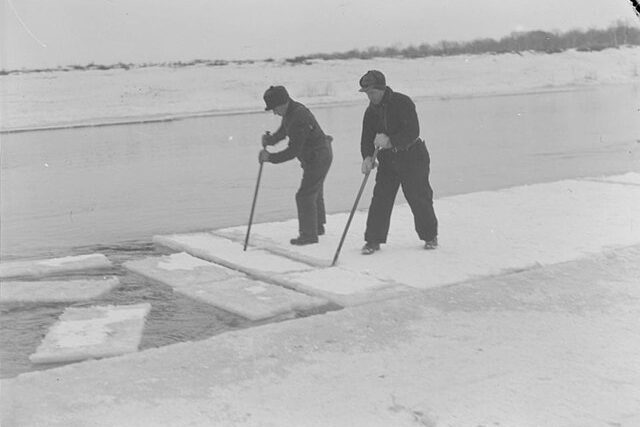
Picture a group of workers, bundled in thick clothing, harvesting blocks of ice from frozen lakes and rivers. The ice cutter was once a vital part of the pre-refrigeration era, providing ice for food preservation and cooling. Experts emphasize the physical labor involved in this job, requiring strength and endurance to cut and transport large blocks of ice. The ice cutter’s role was essential to the functioning of households and businesses, ensuring the availability of ice in warmer months. This wasn’t just about cutting ice; it was about preserving life, a crucial service in a time before modern refrigeration.
The development of mechanical refrigeration gradually replaced the need for ice cutters. Historians note that this technological advancement revolutionized food preservation and cooling, making ice readily available year-round. The ice cutter’s role was deeply connected to the seasonal rhythms of nature, and their disappearance signaled a change in how we manage our resources. This wasn’t just about losing a job; it was about losing a connection to the natural world, a reliance on the seasons.
The Elevator Operator
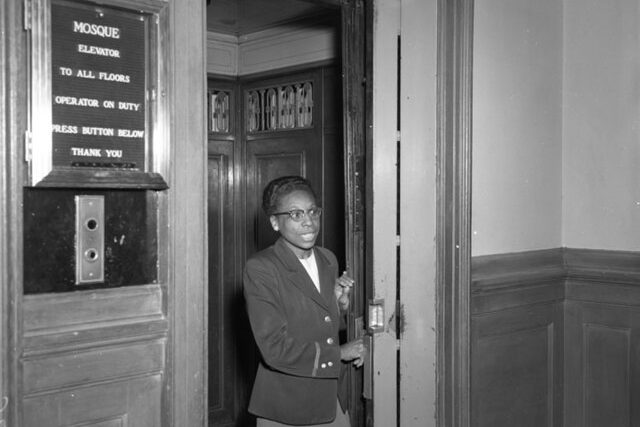
Imagine a uniformed attendant, standing inside an elevator, manually controlling its ascent and descent. The elevator operator was once a common sight in buildings, providing a personalized service and ensuring the smooth operation of elevators. Experts highlight the social interaction involved in this job, acting as a point of contact for building occupants. The elevator operator’s role was not just about controlling the elevator; it was about providing a sense of comfort and security. This wasn’t just about moving people; it was about offering a personal touch, a human element in a mechanical system.
The automation of elevators gradually replaced the need for human operators. Historians note that this technological advancement made elevator travel more efficient and accessible. The elevator operator’s role was deeply connected to the social dynamics of the building, and their disappearance signaled a change in the urban landscape. This wasn’t just about losing a job; it was about losing a personal connection, a human presence in a mechanical world.
The Town Crier

Picture a figure, walking through the streets, ringing a bell and shouting out announcements. The town crier was once the primary source of public information, disseminating news and proclamations to the community. Experts emphasize the importance of this role in pre-literate societies, ensuring that important information reached everyone. The town crier’s voice was the voice of the community, a vital link in the communication chain. This wasn’t just about delivering news; it was about connecting people, a human voice in a time before mass media.
The rise of newspapers and other forms of mass communication gradually replaced the need for town criers. Historians note that this transition marked a significant shift in how information was disseminated, moving from oral communication to written media. The town crier’s role was deeply connected to the social fabric of the community, and their disappearance signaled a change in how we receive information. This wasn’t just about losing a job; it was about losing a human connection, a voice that echoed through the streets.
The Milkman

Imagine a milkman, making his rounds in the early morning, delivering fresh milk to doorsteps. The milkman was once a common sight in neighborhoods, providing a convenient and reliable service. Experts highlight the personal connection between the milkman and their customers, fostering a sense of community. The milkman’s role was not just about delivering milk; it was about providing a daily service, a familiar face in the neighborhood. This wasn’t just about delivering goods; it was about delivering a sense of community, a daily interaction.
The rise of supermarkets and the decline of home delivery gradually replaced the need for milkmen. Historians note that this transition marked a shift in consumer habits, moving from local deliveries to centralized shopping. The milkman’s role was deeply connected to the daily rhythms of the neighborhood, and their disappearance signaled a change in how we shop. This wasn’t just about losing a job; it was about losing a personal connection, a familiar face in a changing world.
The Typesetter

Imagine a worker, meticulously arranging individual letters and characters to create printing plates. The typesetter was once a vital part of the printing industry, responsible for preparing text for newspapers, books, and other printed materials. Experts emphasize the skill and precision required for this job, requiring a deep understanding of typography and layout. The typesetter’s role was essential to the production of printed materials, ensuring the accuracy and readability of text. This wasn’t just about setting type; it was about shaping communication, a vital part of the printing process.
The advent of computer-based typesetting and digital printing gradually replaced the need for manual typesetters. Historians note that this technological advancement revolutionized the printing industry, making it faster and more efficient. The typesetter’s role was deeply connected to the art of printing, and their disappearance signaled a change in how we create and consume printed materials. This wasn’t just about losing a job; it was about losing a craft, a skilled trade in a digital age.
The Telegraph Operator
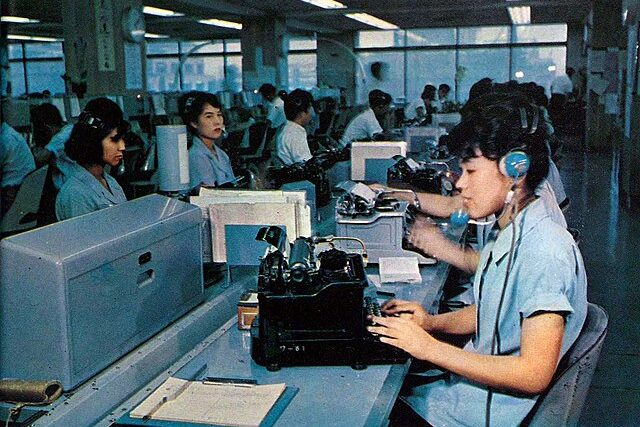
Imagine a worker, tapping out messages in Morse code, transmitting information across vast distances. The telegraph operator was once a vital part of long-distance communication, connecting people and businesses across the globe. Experts highlight the skill and speed required for this job, requiring a deep understanding of Morse code and telegraph equipment. The telegraph operator’s role was essential to the rapid transmission of information, enabling quick communication in a time before telephones. This wasn’t just about sending messages; it was about connecting the world, a vital link in the communication chain.
The rise of the telephone and other forms of electronic communication gradually replaced the need for telegraph operators. Historians note that this transition marked a significant shift in communication technology, moving from coded messages to voice communication. The telegraph operator’s role was deeply connected to the early days of global communication, and their disappearance signaled a change in how we connect. This wasn’t just about losing a job; it was about losing a skill, a coded language in a world of instant communication.
The Knocker-Up
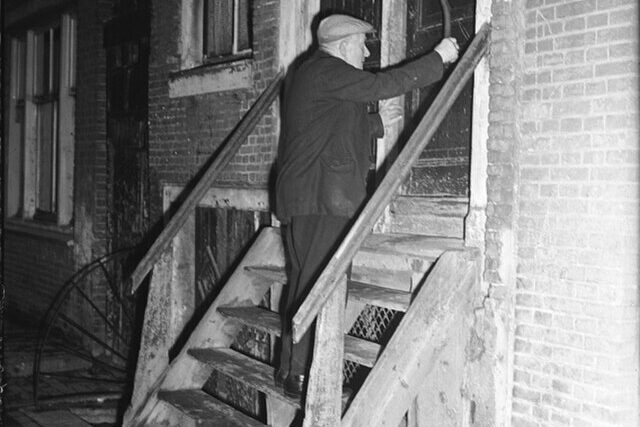
Imagine a figure, moving through the pre-dawn streets, tapping on windows with a long stick to wake sleeping workers. The knocker-up was once a vital part of industrial towns, ensuring that workers arrived at their jobs on time. Experts highlight the reliability of this human alarm clock, a personal touch in a time before widespread alarm clocks. The knocker-up’s role was essential to the functioning of factories and mills, ensuring that production schedules were met. This wasn’t just about waking people up; it was about keeping the wheels of industry turning, a vital part of the workforce.
The rise of affordable alarm clocks and changing work schedules gradually replaced the need for knocker-ups. Historians note that this transition marked a shift in timekeeping, moving from human-driven wake-up calls to personal alarms. The knocker-up’s role was deeply connected to the rhythm of industrial life, and their disappearance signaled a change in the working world. This wasn’t just about losing a job; it was about losing a personal touch, a human connection in a time-driven world.
The Rag-and-Bone Man

Picture a figure, pushing a cart through the streets, collecting discarded items and scraps. The rag-and-bone man was once a common sight in neighborhoods, recycling materials and providing a valuable service. Experts emphasize the resourcefulness of this profession, turning unwanted items into useful materials. The rag-and-bone man’s role was essential to the early recycling efforts, reducing waste and conserving resources. This wasn’t just about collecting scraps; it was about giving items a second life, a vital part of the circular economy.
The rise of modern waste management systems and recycling facilities gradually replaced the need for rag-and-bone men. Historians note that this transition marked a shift in waste disposal, moving from individual collection to centralized systems. The rag-and-bone man’s role was deeply connected to the community’s resource management, and their disappearance signaled a change in how we handle waste. This wasn’t just about losing a job; it was about losing a personal connection to recycling, a human element in waste management.
The Leech Collector

Imagine a figure, wading through marshes and swamps, collecting leeches for medical purposes. The leech collector was once a vital part of traditional medicine, providing leeches for bloodletting and other treatments. Experts highlight the specialized knowledge required for this job, requiring an understanding of leech habitats and behavior. The leech collector’s role was essential to the practice of medicine, providing a natural remedy for various ailments. This wasn’t just about collecting leeches; it was about providing a medical resource, a vital part of traditional healing.
The rise of modern medicine and pharmaceutical treatments gradually replaced the need for leech collectors. Historians note that this transition marked a shift in medical practices, moving from natural remedies to synthetic drugs. The leech collector’s role was deeply connected to the history of medicine, and their disappearance signaled a change in how we treat illnesses. This wasn’t just about losing a job; it was about losing a connection to traditional healing, a natural remedy in a modern world.
The Resurrectionist

Picture a figure, working under the cover of darkness, exhuming bodies for medical research. The resurrectionist was once a controversial figure, providing cadavers for anatomical studies. Experts emphasize the ethical dilemmas surrounding this profession, raising questions about the treatment of the deceased. The resurrectionist’s role was essential to the advancement of medical knowledge, providing specimens for anatomical research. This wasn’t just about exhuming bodies; it was about contributing to scientific progress, a controversial part of medical history.
The rise of ethical guidelines and regulated body donation programs gradually replaced the need for resurrectionists. Historians note that this transition marked a shift in medical research, moving from illicit practices to regulated procedures. The resurrectionist’s role was deeply connected to the history of anatomy, and their disappearance signaled a change in how we obtain medical specimens. This wasn’t just about losing a job; it was about losing a controversial practice, a dark chapter in medical history.
The Human Computer

Imagine a room filled with people, meticulously performing complex calculations by hand. The human computer was once a vital part of scientific and engineering fields, providing computational support. Experts highlight the precision and accuracy required for this job, requiring a deep understanding of mathematics and data analysis. The human computer’s role was essential to the advancement of science and technology, providing crucial calculations for various projects. This wasn’t just about performing calculations; it was about contributing to scientific progress, a vital part of research.
The rise of electronic computers and automated calculation software gradually replaced the need for human computers. Historians note that this transition marked a significant shift in computational technology, moving from manual calculations to automated systems. The human computer’s role was deeply connected to the history of science, and their disappearance signaled a change in how we perform calculations. This wasn’t just about losing a job; it was about losing a skilled profession, a human element in a computational world.
The Film Projectionist
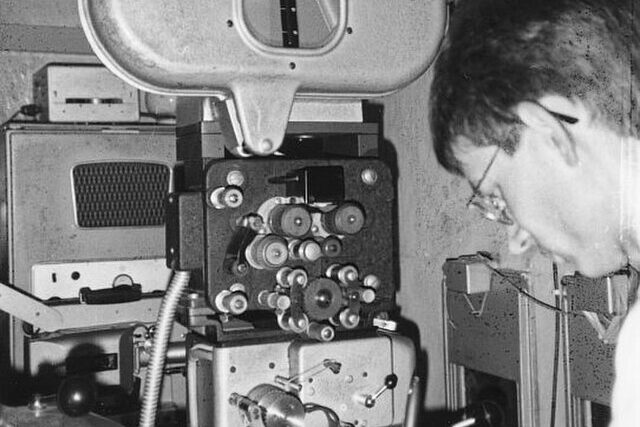
Imagine a figure, working in a darkened booth, operating a film projector to bring movies to life. The film projectionist was once a vital part of movie theaters, ensuring the smooth and seamless presentation of films. Experts highlight the technical skill required for this job, requiring an understanding of film projectors and splicing techniques. The film projectionist’s role was essential to the movie-going experience, providing the visual magic that captivated audiences. This wasn’t just about showing movies; it was about creating an experience, a vital part of cinematic entertainment.
The rise of digital cinema and automated projection systems gradually replaced the need for film projectionists. Historians note that this transition marked a significant shift in film technology, moving from physical film reels to digital files. The film projectionist’s role was deeply connected to the history of cinema, and their disappearance signaled a change in how we watch movies. This wasn’t just about losing a job; it was about losing a skilled profession, a human element in the cinematic experience.


